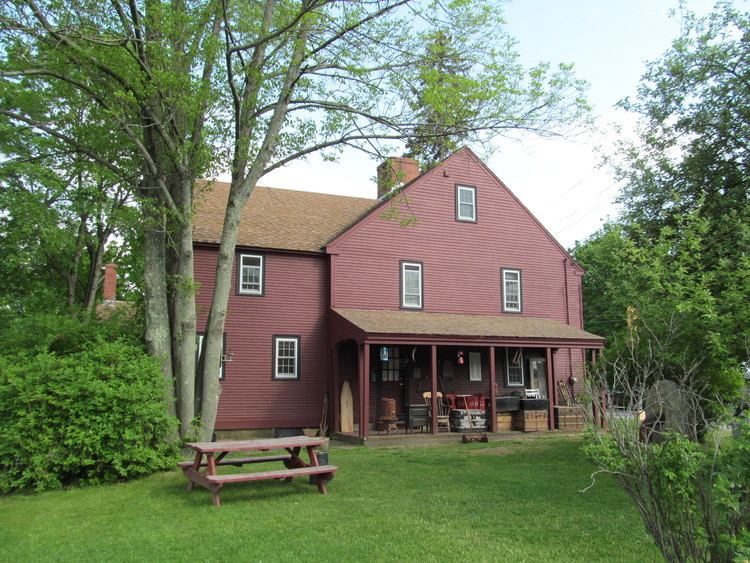Country United States Disincorporated (Annexed) January 1, 1897 Local time Saturday 2:16 AM | Incorporated January 7, 1672 Time zone Eastern (UTC-5) | |
 | ||
Weather -9°C, Wind NW at 23 km/h, 42% Humidity | ||
Bradford is a village and former town, in Essex County, Massachusetts, United States. The village, located on the south side of the Merrimack River, was annexed to the city of Haverhill in 1897. Bradford has its own post office and zip code: 01835.
Contents
Map of Bradford, Haverhill, MA 01835, USA
History
Bradford was originally part of the town of Rowley, and was called "Rowley on the Merrimack", "Rowley Village by the Merrimack", "Merrimac Lands", or just "Merrimack" before the name was changed to Bradford at a town meeting held January 7, 1672. It was named in memory of Bradford in the West Riding of Yorkshire, England, from which some of the settlers had emigrated, and first paid colonial tax on October 13, 1675. The east parish of Bradford (established in 1726) separated in 1850 and was incorporated as the town of Groveland on March 8, 1850. The remaining west part of Bradford was annexed to the city of Haverhill in 1897.
The original meeting house was located where the Old Bradford Burying Ground is at 326 Salem St. This first church was replaced in 1705. In 1726 the east parish of Bradford was established which later in 1850 became the town of Groveland. In 1751 the church was replaced by a new building that was located on what is now Bradford common. In 1848 the fifth Bradford church was built at is present location facing the common.
Ministers of Bradford were the Rev. Zechariah Symmes 1682 to 1707, Rev. Thomas Symmes 1708 to 1725, Rev. Joseph Parsons 1726 d.1765, Rev. Samuel Williams 1765 to 1780, Rev. Jonathan Allen 1781 d.1827, Rev. Ira Ingraham 1824 to 1830, Rev. Loammi Ives Hoadly 1830 to 1833, Rev. Moses Searle 1833 to 1834, Rev. Nathan Munroe 1836 to 1854, Rev. James T. McCollom to 1865, and Rev. John D. Kingsbury.
The first school was noted in Bradford in 1701. In 1820 there were seven school houses in six school districts in Bradford. Bradford Academy was established in 1803.
In 1676 Thomas Kimball was killed by Indians in Bradford during King Philips War. In 1755 during the French and Indian War Capt. William Kimbal marched a company of men from Bradford to Stillwater, New York. Capt. Nathaniel Gage took a company of 40 men from Bradford to the Battle of Bunker Hill in 1775. The railroad came to Bradford in 1837.
Epidemics struck the town several times in its early years. In 1736, an epidemic of throat distemper killed 47 children and nine adults. The same disease struck again in 1762 when 23 died, and again in 1794 when 15 died. In 1777 a smallpox outbreak caused ten deaths.
The population of Bradford has been 1765 - 1125, 1776 - 1240, 1790 - 1371, 1800 - 1420, 1810 - 1360, 1820 - 1600, 1830 - 1856, 1840 - 2222. In 1850 after Groveland separated from Bradford the population was 1328. In 1895, just before Bradford was annexed by Haverhill, the population was 4736. The 2000 U.S. Census for the Bradford zip code (01835) shows the population as 13,416. [1]
Annexation
Bradford is just south of Haverhill on the other side of the Merrimack River. In 1850, the eastern part of Bradford separated to become the Town of Groveland. At the time Haverhill was incorporated as a city in 1870, there were calls for Bradford to be annexed. In 1896, a vote in both Bradford and Haverhill approved the annexation. On January 1, 1897, Bradford joined the City of Haverhill.
Finances played a part in the campaign for annexation. Some Bradford residents had businesses in Haverhill and wanted lower taxes. Traditionalists wanted Haverhill to be a dry town as Bradford was. Businesses in Lawrence, Portsmouth, and Andover wanted Haverhill to be a dry town to increase business in those towns. Bradford lacked the municipal resources and services that Haverhill had, such as hospitals and schools. Some Haverhill residents favored annexation so that to increase Haverhill's English population against the Irish, French-Canadians, Germans, Italians, Hungarians and Slovaks,
Bradford was primarily a farming community and there are a few farms still in operation. Bradford had several shoe manufacturers who later moved to Haverhill except for William Knipe's factory in Ward Hill. Several mills long operated on the Johnson's creek (now in Groveland). These included fulling mills (used to remove the lanolin oil from woolen cloth), saw mills, bark mills, and grist mills for grinding corn.
